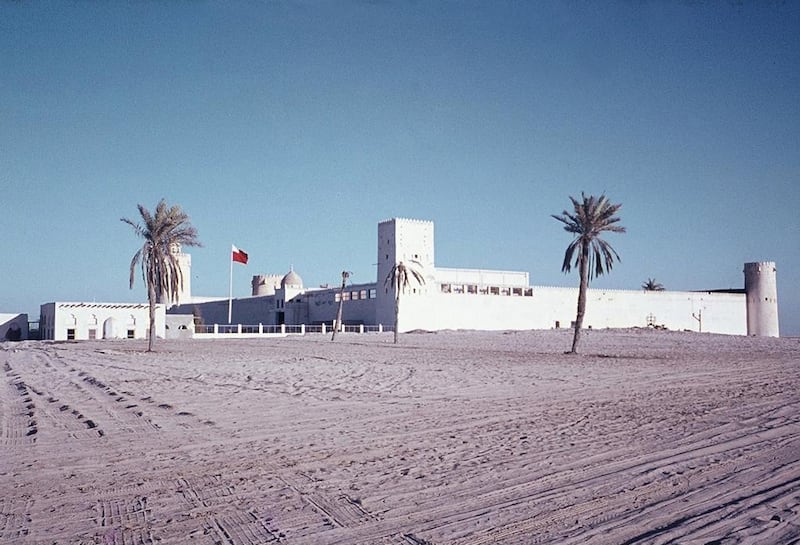1760-61: Fresh water is found on the island of Abu Dhabi and Sheikh Dhiyab bin Isa, leader of the Bani Yas tribe, orders the building of a watchtower.
1795: Sheikh Shakhbut bin Dhiyab takes up residence on the island and begins construction of a fort.
1818-33: David Wilson, British Resident in the Gulf, reports that 'the fort, although neat, is but small, indeed it is little better than a fortified house'.
1845-55: Sheikh Saeed bin Tahnoon greatly expands the fort, turning it into a two-storey building.
1901: Fort is photographed for the first time by Samuel Zwemer, an American missionary who describes visiting Sheikh Zayed bin Khalifa's 'imposing castle'.
1939: Sheikh Shakhbut bin Sultan uses some of the first oil revenue to fund expansion, enclosing the old walls with a larger structure that still remains.
1958: Samples of the first oil from the Das Island exploration base are brought to Sheikh Shakhbut in his Qasr Al Hosn majlis.
1966: After the accession of Sheikh Zayed bin Sultan as Ruler of Abu Dhabi, the fort ceases to be the Ruler's residence and is used for administration.
1980s: Renovation, including the construction of a new two-storey building on the site of a 19th-century structure.
2008: Fort is closed to the public in preparation for major restoration.
2013: First Qasr Al Hosn Festival.
2014: Second Qasr Al Hosn Festival allows visitors to inspect parts of the structure under renovation.






